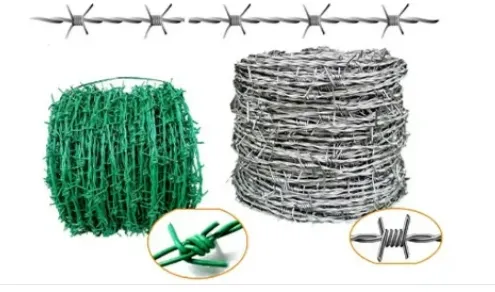-
 Phone:
Phone: -
 Email:
Email:

Comparing Razor Wire and Barbed Wire for Security Applications
The Practicality and Purpose of Razor Wire and Barbed Wire
Razor wire and barbed wire are both effective deterrents in security applications, often found encircling properties, prisons, military facilities, and various industrial premises. While they serve a common purpose—restricting access—they also embody distinct features and purposes that make them suitable for different applications.
History and Development
Wire fencing can be traced back to the late 19th century, primarily designed to contain livestock and mark property boundaries. Barbed wire was invented in the 1860s and became the standard for fencing across North America, thanks to its cost-effectiveness and ease of installation. Razor wire, an evolved variant, emerged later, developed specifically to meet the demands of heightened security. It features sharp blades that can inflict severe injuries, thus providing an effective barrier against intrusion.
Design and Composition
Barbed wire consists of two strands of wire twisted together with sharp spikes or barbs placed at intervals. These barbs deter animals and individuals from attempting to cross the barrier, as the risks of entanglement and injury are heightened. The design is simple yet effective, making it a popular choice for agriculture, ranches, and some low-security facilities.
In contrast, razor wire comprises a series of sharp metal blades attached to a central strand of wire. The blades are shaped like razor blades, providing a formidable obstacle to anyone attempting to climb over or cut through the barrier. Razor wire is typically used in high-security environments such as prisons, military bases, and areas requiring enhanced security measures.
Applications
razor wire and barbed wire

Barbed wire finds its primary use in agricultural settings. Farmers and ranchers use it to keep livestock contained and prevent wildlife from entering crops. It is also employed in residential areas where a basic level of security is needed. The relatively low cost and ease of installation make it attractive for various applications. Barbed wire can be installed on fences, gates, and even as a standalone barrier.
Razor wire, on the other hand, is predominantly used in security-sensitive areas. Prisons use it to prevent inmate escapes, while military installations rely on it to protect sensitive equipment and personnel from external threats. Additionally, it's common in facilities that handle hazardous materials or sensitive information, where unauthorized access could pose serious risks. Because of its intimidating appearance and potential for injury, razor wire often signals a strong security presence, discouraging potential intruders from attempting to breach the perimeter.
Considerations and Regulations
Despite their effectiveness, the use of barbed and razor wire raises ethical and safety concerns. The sharp edges can cause severe injuries not only to humans but also to animals. Consequently, many jurisdictions have implemented regulations regarding their installation, especially in residential areas. Property owners must adhere to local building codes, regulations, and humane considerations when erecting such barriers.
Furthermore, the aesthetics of using barbed or razor wire can be unappealing, leading property owners to seek alternative security measures that are less visually intrusive. Electric fences, for instance, offer a non-lethal means of containment and security, capable of delivering a shock without permanent harm.
Conclusion
In conclusion, both razor wire and barbed wire serve vital roles in securing property and preventing unauthorized access. While each type has its strengths and appropriate applications, they must be used thoughtfully, keeping safety, ethics, and regulatory compliance in mind. As security needs continue to evolve, the development of new fencing technologies will likely lead to safer and more humane ways to protect properties, while still deterring potential threats. Understanding the differences and applications of these materials helps in making informed choices about security measures in various contexts.
-
Wire Mesh for Every Need: A Practical SolutionNewsJul.25,2025
-
Steel Fences: Durable, Secure, and Stylish OptionsNewsJul.25,2025
-
Roll Top Fencing: A Smart Solution for Safety and SecurityNewsJul.25,2025
-
Cattle Farm Fencing Solutions for Maximum SecurityNewsJul.25,2025
-
Affordable Iron Binding Wire SolutionsNewsJul.25,2025
-
Affordable Galvanized Wire SolutionsNewsJul.25,2025
-
Wire Hanger Recycling IdeasNewsJul.25,2025








